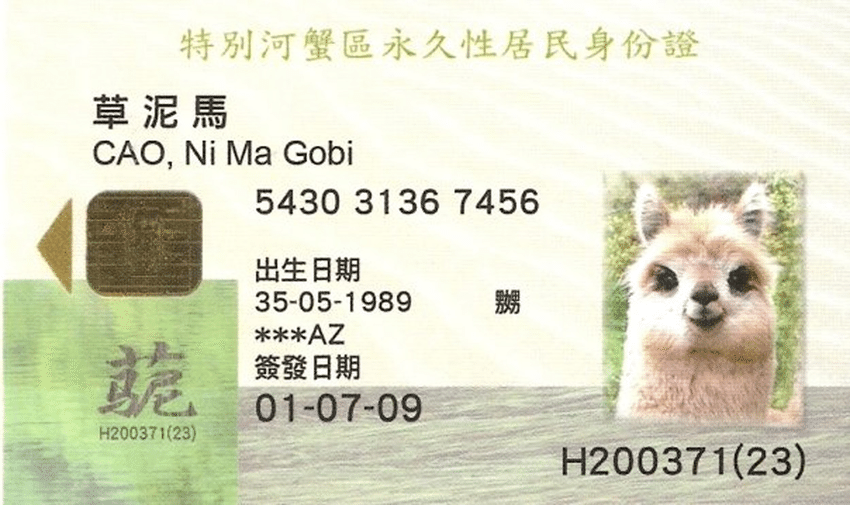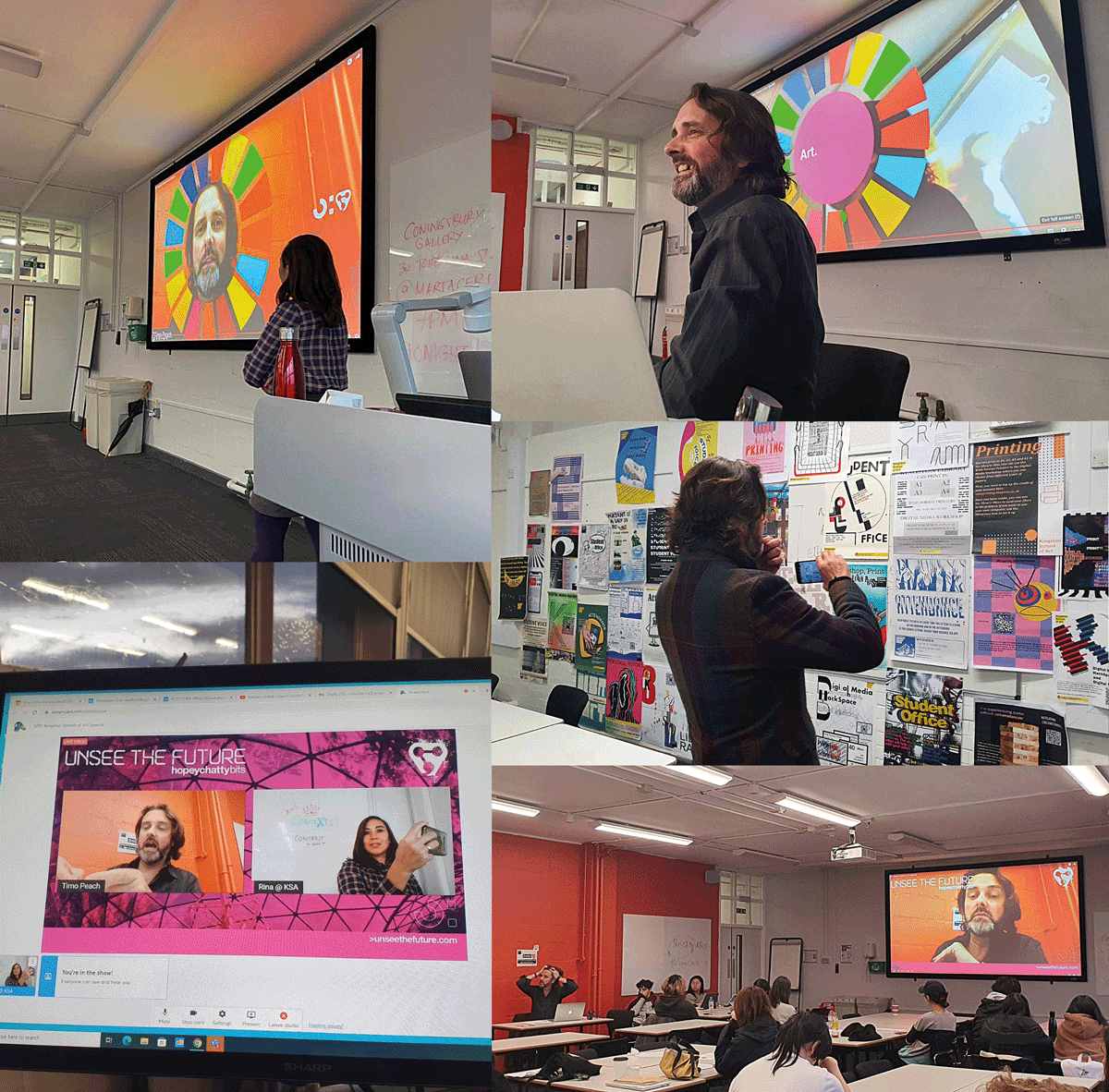In the era of permacrisis, knowing where to begin seems vital in tackling the challenges unfolding in our lives around the world. As Timo discovered in a recent guest lecture, grasping context properly is going to help you do this.
How do you hope to rebel?
Or at least, how do you imagine you engage with the world? You know, that stuntingly terrible looking place and time you find yourself in, you poor sap. ..Are you shrewdly paying attention for signals of some kind?
Paying attention is exhausting for too long, obviously – not helped by how easily depressing classrooms are; the spaces we are educated in to cope with the world often look designed to reduce all sensory input except the drone of something academic down the front.
But out in the noise, how you pick out signals and pearl them together is personal sensemaking. And how did you learn that?
This week, I couldn’t help noticing the protests in China. Because how could anybody.
Nodding gravely at the bravery of these public anti-government sentiments against the Communist regime’s Covid lockdowns, the actual expressions of those feelings are also quite something.
The blank white placard. Looks like an oversight and really isn’t.
A Chinese colour of mourning or a space held for statements that dare not speak?
Turning up ominously in lots of the protests, I actually immediately thought these a practical bit of art direction for photoshopping in anything you like in post, but I don’t think protestors were planning to add vulgar doodles on the pics from IP addresses afterwards. That’s not how they seem to do this.
Some placards were written on. With a mathematical formula from theoretical physics.
Protesters at Beijing’s Tsinghua University were photographed carrying signs displaying the Friedmann equation. And this is so clever it outsmarts Einstein – literally, because in the early 1920s Russian physicist Alexander Friedmann was trying to fix Albert’s patch, the Cosmological Constant, for his own brilliant theory of General Relativity, to show that the universe isn’t static but in constant flux.
In fact, the universe is very much expanding right now.
The name does also sound like “freed man” which seems more like the zinger on the cake than the main dish.
Then there are the alpacas.
Paraded by someone down the high street of Urumqi, it refers to a protest in 2009 as internetty as it is Victorian boys boarding school.
The Ten Legendary Beasts of Baidu were, it seems, mythical creatures inserted into the Chinese tech giant’s editable encyclopedia pages – illustrious animals such as the Dafei Chicken and the Chrysanthemum Silkworm and, most relevantly here, the Grass Mud Horse, which supposedly looked much like an alpaca. Inserted simply because all of these beasts were Chinese homonyms for vulgarities – in this street-paraded case Mandarin for “go fuck your mother.”
Man. The Chinese are not just brave they are boldly brainy.
And really seem to understand context.
“Holding different emotions in tension”
Rina Atienza teaches context and signal reading to students in the slightly freer capital of the UK, London, at Kingston School of Art. In fact, as I have said to them on the couple of occasions she’s invited me to guest lecture, she is handing them a cultural studies curriculum so rich it is a cypher to unlock our times.
But turning the key means finding the right lock; the context for teaching matters, like any storytelling. And context partly means theatre.
Up with her last week, she suggested we try a new bit of theatre with them.
Rina I would say gave one of the most fascinating conversations with me on the first series of Unsee The Future: The Hopeychattybits earlier this year. She can answer philosophical questions about media, art history and ways of seeing our worlds with engaging intent at every turn.
For her term 1 lesson looking at Globalisation, she wanted to turn the whole classroom into a live episode of UTF, with everyone there a guest in the conversation.
We took my simple little Streamyard session on a laptop into the classroom and set me up with a second camera, for fun, on one side of the room, with Rina logged in as a guest on her machine on the other. We also set up a couple of laptops as guests in the middle of the room. Then I introduced myself with a little context about how an artist found himself looking at the state of the world quite as I have, before getting to the brief – researching the Sustainable Development Goals.
The SDGs are a technocratic sounding thing, not an artistic one.
But they are also an invitation into complexity. Where to start understanding them? And why?
Why is because the SDGs represent a widely shared framework for global response to global problems. Where we decided was a combination of tombola-ing the goals randomly to little teams of the students and simply reacting with what struck them honestly first.
The brief was to explore a first impression of the Goal you found yourself with and bring your honest reaction to it – feelings, notable examples of the challenges or of potential solutions. Then we’d chat together in the format of the show. That was it.
For a first ever go at this, we didn’t produce a slick media event technically – we just had an efficient first go at creating an experience that was enough of a new format to bring out thoughts in a very unclassroomy way.
“The ability to hold more than one emotion in tension while looking at crisis is vital” Rina told them. It’s an obvious MO for Momo – we can laugh and relax our uptight minds even while looking squarely at impossible seeming problems.
Especially then.
Creating a dash of theatre energy in the room and getting them to move into groups and then move to the cameras to “appear on the show” with their thoughts was following some basic principle of embodiment. A basic hint of drama class we all need to learn well.
What they said was the beginning of a good conversation about how complicated and inter-related all the Goals quickly seem. The students found different emotional connections to challenges, some chiming with personal passion and some fairly trying to couch the only reasonable first reaction: Jeeez.
Given that many of Rina’s students are Chinese, their perspectives implied that they get context, alright.
It also showed all of them them in a much more alive way why we think the Goals are missing a vital goal – as I outline in my little TEDx Cowes talk. For theatre here, I shall let you watch that to get what I mean.
A mere introduction, scrappy like inhabiting the first scribbles on a layout pad, it showed Rina and I as much as it did the young folk trying to make sense of life in the era of crisis.
Context brings alive connection.
At the end I went momentarily dad preach on them.
“Rina and I want you to understand that the very best possible place you could be right now, to make sense of an era of crisis and transition, is right here – in a classroom together at Art School.”
I left wanting every young person – and you – to study a year of cultural history and theory with Rina.
It might unlock the world around you so well it would hone your rebel skills.
——


